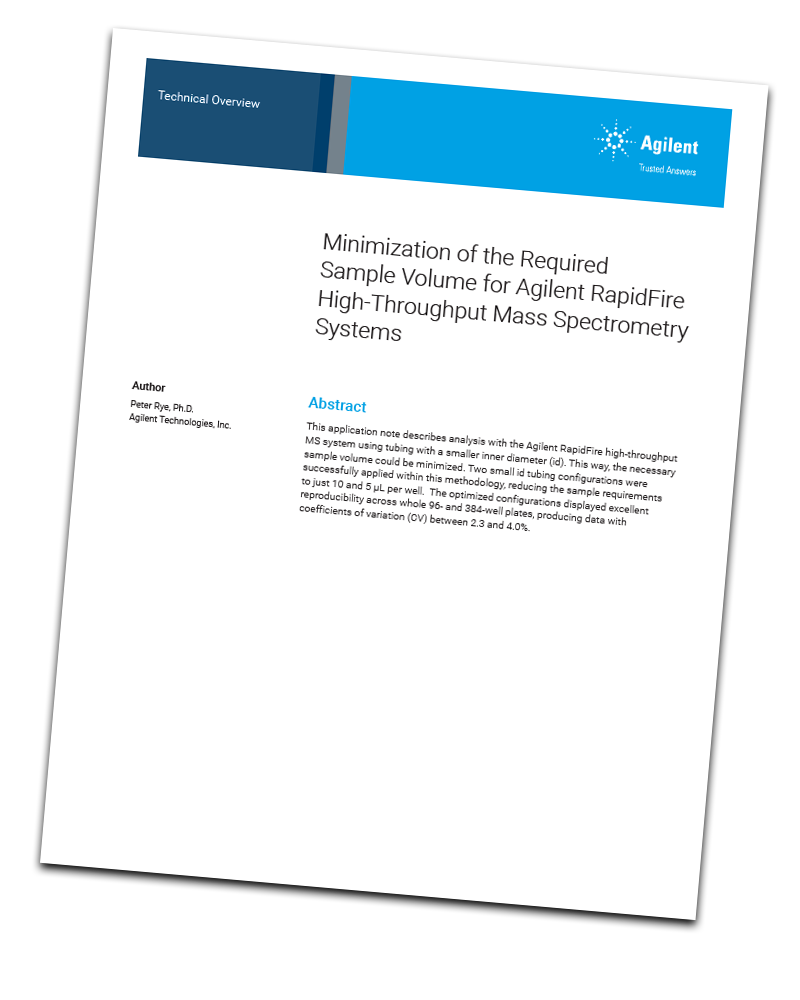This application note describes analysis with the Agilent RapidFire high-throughput MS system using tubing with a smaller inner diameter (id). This way, the necessary sample volume could be minimized.
 Abstract
Abstract
This application note describes how two small id tubing configurations were successfully applied within this methodology, reducing the sample requirements to just 10 and 5 μL per well. The optimized configurations displayed excellent reproducibility across whole 96- and 384-well plates, producing data with coefficients of variation (CV) between 2.3 and 4.0%.
Introduction
The Agilent RapidFire high-throughput mass spectrometry (MS) system is designed to perform online SPE of samples with maximum speed. Consistent with these goals, the id of the tubing used to collect each sample is intentionally large, allowing the liquid from each well to be rapidly sipped by aspiration; sample collection from each well is regularly achieved in less than 200 ms. A consequence of using sample collection tubing (composed of a sipper tube and a sample loop) with a relatively large id is that the volume of liquid sampled from each well is relatively large. Typically, 10 μL of sample is used for each measurement, but dead volume before (in the sipper tube) and after (for the sip sensor) the sample loop results in a total consumption of ~35 μL per sample.
This study evaluated the potential for decreasing RapidFire sample consumption, primarily using sample collection tubing with the same outer diameter (od) but a smaller id. A robust method requiring only 5 μL per well, for 384- and 96-well formats, was achieved, representing a seven-fold reduction in sample needs.
Experimental
Experimental conditions can be found by downloading the full application note.
Results and Discussion
In this section, the topics below are discussed:-
- sipping behavior
- optimization of sample volume and sip time
- reproducibility.
For full details, please refer to the application note.
Conclusion
The goal of these studies was to use non-standard sample collection tubing with a smaller id to decrease the material consumption of Agilent RapidFire MS analyses. Two smaller id tubing configurations were tested, and each was successfully optimized to decrease sample needs. In comparison to the standard beige tubing configuration, which requires 35 μL sample per well with the sip sensor enabled, the gray and red tubing configurations decreased sample needs to 10 and 5 μL per well, respectively. These optimized methods performed reproducibly across entire plates and provided data with low CV.